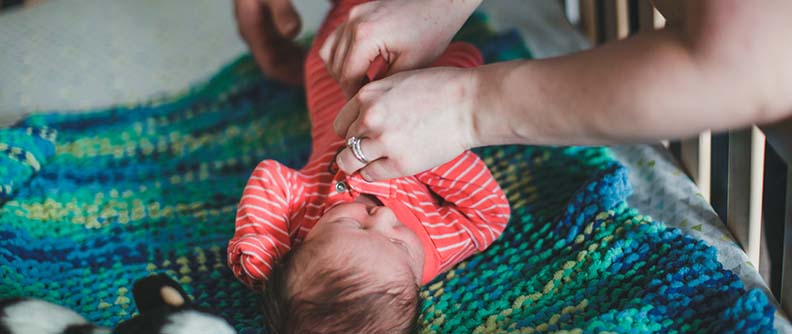Getting enough sleep is important for your baby’s health. There are simple ways to be sure your baby is sleeping safely. Following safe sleep guidelines can help prevent sudden infant death syndrome (SIDS).
Safe sleep guidelines
Always keep in mind the ABCs of sleep for your baby:
- Alone: Your baby should always sleep alone, without any toys or blankets, in their own crib, and not in bed with you. They should still be in the same room with you, though.
- Back: You should always put your baby on their back to sleep. This is the number one way to help prevent SIDS.
- Crib: Your baby should sleep in a crib.
It is also important to keep the room at a comfortable temperature so that your baby can sleep in lightweight clothes without a blanket. You want to avoid your baby getting too hot.
Other things you can do to prevent SIDS:
- Breastfeed as much and for as long as you can.
- Keep your baby away from smokers and places where people smoke. If you smoke, try to quit. Until you can quit, keep your car and home smoke-free.
- Offer a pacifier at nap time and bedtime. If you are breastfeeding, wait until breastfeeding is going well before offering a pacifier.
Crib safety
The best place for a baby to sleep is in a crib, cradle, or bassinet that meets safety standards. Here are some safety guidelines to follow when choosing and setting up your baby’s crib:
- Keep soft items and loose bedding, including blankets, pillows, stuffed animals, and toys, out of the crib.
- Make sure that your baby's crib has a firm mattress with a fitted sheet. Don't use sleep positioners, bumper pads, or other products that attach to crib slats or sides.
- Make sure that the crib slats are less than 2 3/8 inches apart. Your baby's head can get trapped if the openings are too wide.
- Make sure the top of the rail is at least 26 inches from the top of the mattress.
- Do not hang toys across the crib.
- Remove any knobs on the corners of the crib so that they don't fall off into the crib.
- Avoid using older or used cribs, as they may not meet current safety standards.
